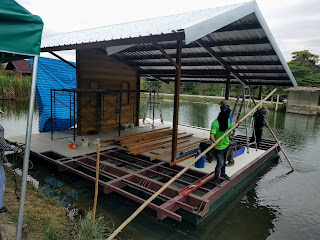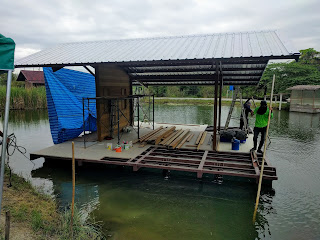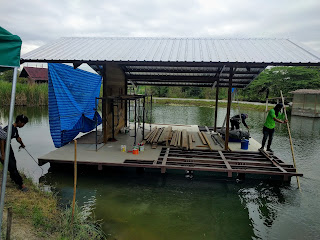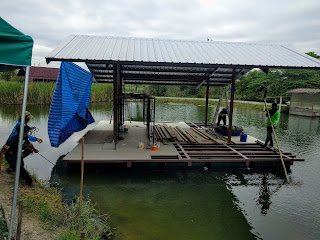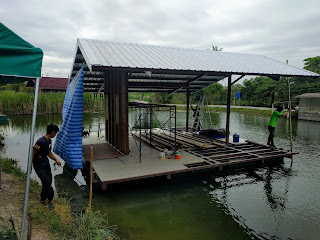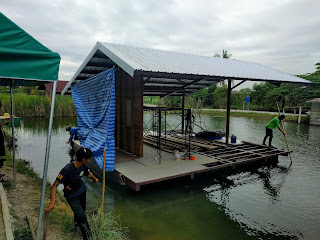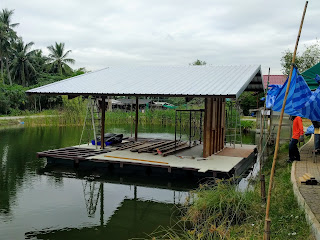Last week, I noticed that the orientation of BaanLoiNaam when the workers were building it had the longer roof facing west. Since BaanLoiNaam is designed for a completely disconnected operation, it will be getting all of the house electricity from solar panels on this roof. And being in the norther hemisphere, the sun is generally southward on average. So this roof will on average be facing southwards once BaanLoiNaam is completed and deployed into the pond.
(Actually, unlike a normal house, BaanLoiNaam can actually rotate over the course of the day to track the sun, but this would mean that this roof will face southeast in the morning, southwards around noon, and southwest in the late afternoon.)
So the house was 90 degrees rotated from the predominant orientation it will be when we are living in it. But since we are making a lot of design decisions are being made as we build such as which windows will be tinted and how much, what kind of privacy screens we will need on the outdoor bathroom, etc., I thought it would be easier to visualize the context with the house in the “correct” orientation. So I asked the workers if they wouldn’t mind rotating the house.
It was a surprisingly easy process:
Here is a photo from the south side in the new orientation:
I think Praew and I could have probably done it easily ourselves. Despite weighing more than 5 metric tonnes at this point, it requires only a mild shove with your foot to push the house off from the mooring.
Most likely this comes from the fact that at normal velocities, drag increases proportional to the square of the velocity and the power required to maintain this velocity increases proportional to the cube of velocity. So first try to imagine how fast the house might be able to travel with a 10 horsepower engine providing thrust. This is not likely to be very fast given how heavy and boxy it is, but I might imagine it going around 5kph as a first guess. You might be tempted into thinking this means that it takes a huge amount of power to move this thing. But you have to remember that if you are willing to go 30x slower (about 10 cm/sec), it may require only about 30^3=27,000x less power and 30^2=900x less force to push it.
Side note: At really low speeds/Reynolds’ numbers, drag becomes dominated by linear forces, but since water is quite viscous, we are probably talking quite slow for that to kick in. From what I understand, the rule of thumb is if there is turbulence (i.e. eddies in the water), then the drag is quadratic. If it is laminar then it may be linear. Given how boxy the pontoons are, it is rather hard to imagine the house moving through the water and not having eddies, even at very slow speeds. So I’m guessing the drag is quadratic for any speed we are talking about.
Based on this rough estimate, 27,000x less power means maybe we can move the house at a few centimeters per second with about 1/3000th of a horsepower. I’m not a young buck anymore, but pretty sure I can provide that much power. 😉
It would be interesting (and probably more relevant) to know the force required. I have no idea how much force is required to pull the house either at 5kph or at 10 cm/sec. I can probably measure it by pulling the house at a constant speed with a spring force meter, but I don’t have a force meter yet. Maybe I’ll ask around to see if I can source one easily. Of course, there is always eBay.
It might be fun to do this test some day. Look for a post titled “how much force is required to move my house?” 🙂
